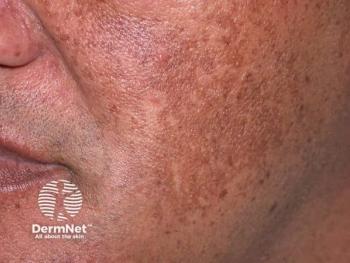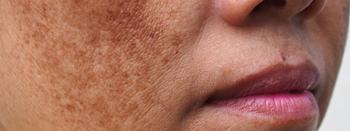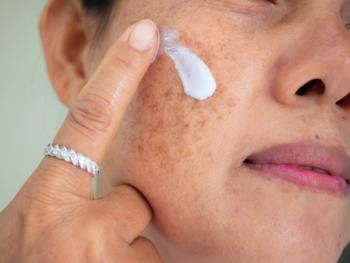
Can PRP improve melasma?
A small study examines platelet-rich plasma injection as alternative or adjuvant melasma treatment.
Platelet-rich plasma (PRP) injection might be an effective alternative or adjuvant melasma treatment, according to a split-face
Researchers in Thailand studied 10 women with mixed-type bilateral melasma by injecting one side of their faces intradermally with PRP and the other side with saline, as the control. Women in the study were between ages 33 to 58 years. Two had Fitzpatrick skin type III and 8 skin type IV.
Their treatment protocol involved four treatment sessions, with each treatment performed every two weeks. They prepared the PRP using the YCELLBIO Kit (Ycellbio Medical Co.). Researchers instructed patients to use sunscreen, to avoid sun exposure and to use a specific moisturizer and cleanser but no other topicals on their melasma during the study. Researchers reported on outcomes with the Melasma Area Severity Index; a narrow-band reflectance spectrophotometer; and 3D analysis of melanin, hemoglobin and wrinkle levels. They also studied patient satisfaction at baseline, 2, 4 and 6 weeks, as well as 1-month post treatment.
They found the average Melasma Area Severity Index scores fell significantly from 4.92 to 3.5 on the sides treated with PRP - an improvement of 28.9%, according to the study. On the control sides, Melasma Area Severity Index scores decreased from 4.98 at baseline to 4.53 at week 10 - a 9% improvement.
Average melanin levels went from 0.61 at baseline to 0.57 at week 6 with PRP, but the average melanin index and melanin levels did not differ significantly between the treated and control sides. There was, however, a trend toward a gradual melanin reduction with PRP treatment, they report.
Redness and hemoglobin levels did not significantly change on the PRP or control side, but wrinkles notably improved on the PRP versus the control side.
While patient satisfaction remained the same between weeks 2 and 10 of the study, patients’ satisfaction with results on the PRP-treated side improved significantly during that time.
Side effects, including bruising, were mild and resolved on their own within a few days of onset, the authors report.
“These results demonstrate that PRP can partially improve melasma lesions, though this improvement is not as drastic as that in previous studies,” according to the authors.
The researchers cite two previously published papers of three cases, total, including one in which Turkish researchers reported in 2014 on a
“… larger and longer randomized, double-blinded and placebo-controlled trials with greater statistical power are needed for more rigorous evaluation of its long-term efficacy and safety,” the researchers conclude.
Disclosures:
The researchers report no conflicts of interest.
References:
Sirithanabadeekul, P, Dannarongchai, A, Suwanchinda, A. Plateletârich plasma treatment for melasma: A pilot study. J Cosmet Dermatol. 2019; 00: 1-7.
Newsletter
Like what you’re reading? Subscribe to Dermatology Times for weekly updates on therapies, innovations, and real-world practice tips.


















